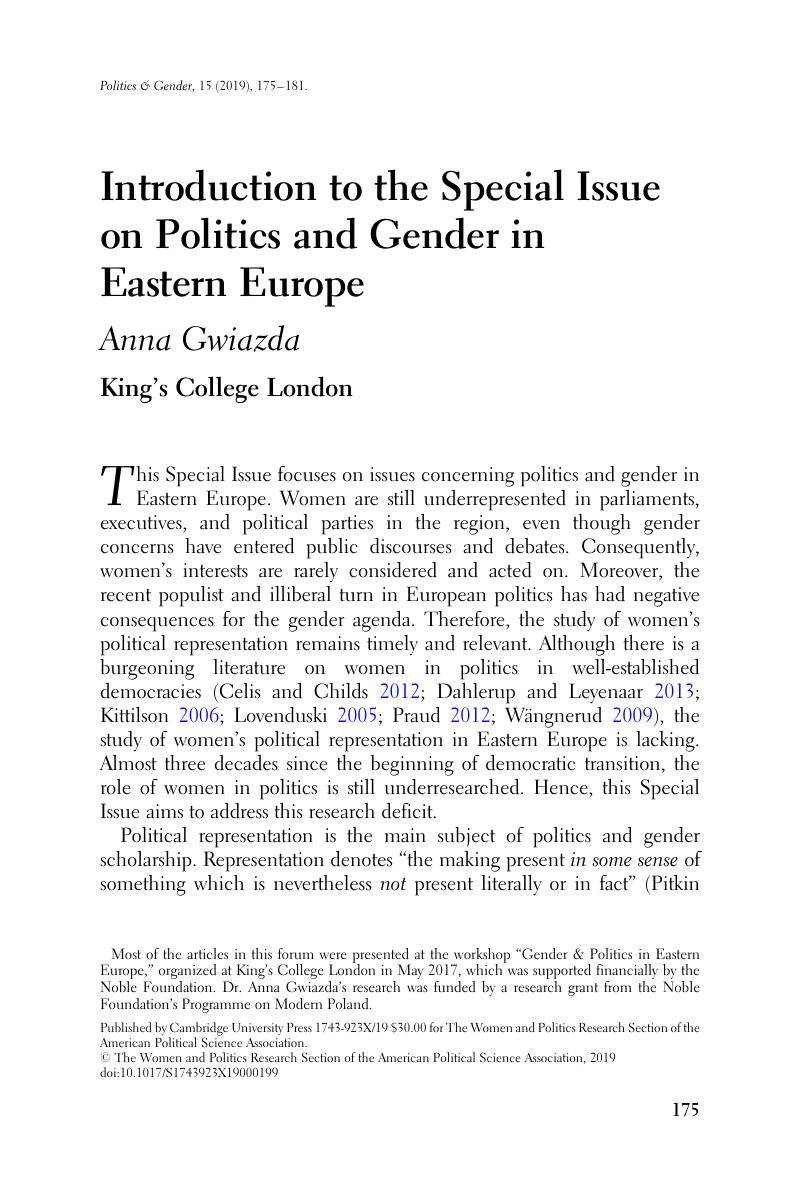Crossref Citations
This article has been cited by the following publications. This list is generated based on data provided by Crossref.
Beloshitzkaya, Vera
2021.
Affirmative gender equality policies in Central and Eastern Europe: Moving beyond the EU requirements.
Party Politics,
Vol. 27,
Issue. 5,
p.
953.
Gwiazda, Anna
2021.
Introduction to the symposium on women’s political representation in Central and Eastern Europe.
East European Politics,
Vol. 37,
Issue. 4,
p.
593.
Tkach, Oleg
Batrymenko, Oleg
and
Borovskiy, Oleksiy
2023.
STATE POLICY IN THE FIELD OF OVERCOMING GENDER INEQUALITY.
Politology bulletin,
p.
285.
Kourou, Nur Sinem
2024.
AKP’de Kadınların Siyaseti: Parti, Parti Kadın Kolları, Kadın Seçmenler.
Ankara Üniversitesi SBF Dergisi,
Vol. 79,
Issue. 3,
p.
607.



